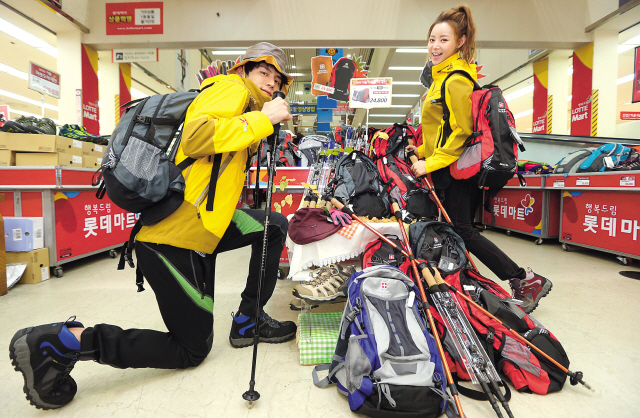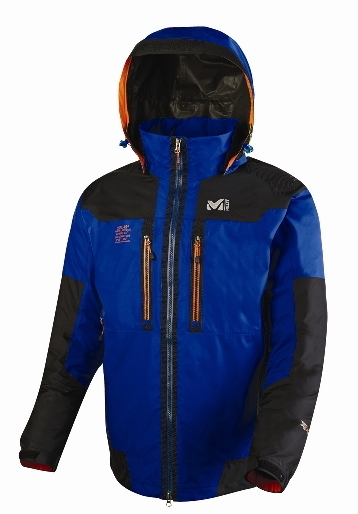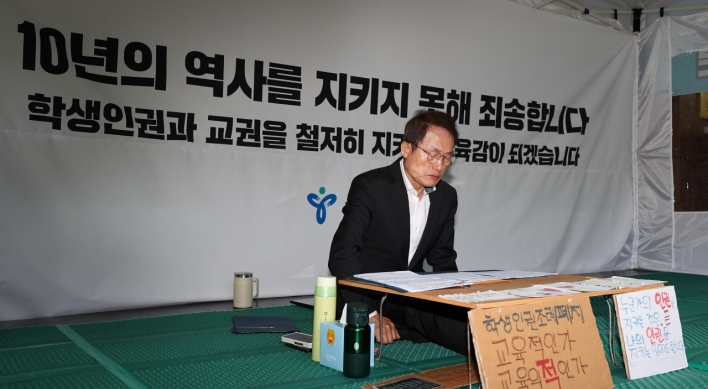Gaps in prices of outdoor brands puzzle shoppers
Consumer organizations say price difference comes from marketing costs, not necessarily product quality
By Korea HeraldPublished : Nov. 15, 2012 - 19:11

South Korea’s outdoor sportswear market is growing explosively, and so is confusion about what is worth what.
Brands in the nearly 5 trillion won ($4.6 billion) market are polarizing in terms of price; the high-end insists that the materials used in its products are inarguably the best, while the relatively low-end argues that its materials are not any less good.
Consumers are lost and confused.
“I was planning to buy matching mountain-climbing jackets for my parents, but gave up because I couldn’t decide what price-level would be appropriate,” said 28-year-old office worker Lee Yu-jin.
“I didn’t want to buy cheap ones sold at marts because I thought the quality was questionable, but I could not buy the high-end brands either because they were ridiculously expensive.”
Jackets from high-end outdoor sportswear brands sold at department stores like Arc’Teryx cost about 1 million won to 2 million won. Pants range from 200,000 won to 1 million won.
Brands in the nearly 5 trillion won ($4.6 billion) market are polarizing in terms of price; the high-end insists that the materials used in its products are inarguably the best, while the relatively low-end argues that its materials are not any less good.
Consumers are lost and confused.
“I was planning to buy matching mountain-climbing jackets for my parents, but gave up because I couldn’t decide what price-level would be appropriate,” said 28-year-old office worker Lee Yu-jin.
“I didn’t want to buy cheap ones sold at marts because I thought the quality was questionable, but I could not buy the high-end brands either because they were ridiculously expensive.”
Jackets from high-end outdoor sportswear brands sold at department stores like Arc’Teryx cost about 1 million won to 2 million won. Pants range from 200,000 won to 1 million won.

There is even a more exclusive range of brands not well known to the public but adored by a small number of ardent fans, said a PR official at Shinsegae Department Store. Such brands are not sold at department stores, which still have to target the general public.
The appearance of outdoor sportswear knock-offs further cloud the picture. Local police last month caught a gang of four who produced and distributed over 8,600 items of high-end outdoor sportswear brand knock-offs, estimated to be worth at least 700 million won.
In the case of cheaper brands, on the other hand, jackets and pants are priced below 100,000 won. They are usually found on sale at local marts like E-mart or Lotte Mart. A full outfit costs less than 300,000 won.
Unexpected sales by outdoor sportswear brands trigger more confusion for consumers. Going into the high season, brands like North Face, Mountain Hardwear, K2 and Eider are holding up to 60 percent discount promotions at flagship stores as well as department stores.
“I regretted buying a North Face jacket for my son last month. I thought it was a brand that didn’t have sales,” said 48-year-old office worker Yoon Hye-jeong.
The relatively expensive brands put emphasis on the excellence and different functions of the materials used.
Experts, however, say that the clothes are overpriced, at about five times the production cost, due to competitive marketing and advertisements using celebrities. The Consumers Union of Korea said that the appropriate price would be about threefold the production cost.
“The companies advertise that their products are water-repellent and water-proof. According to our assessment, however, such functions fade after being worn for a certain amount of time,” said Park Hye-young, head of Consumers Union of Korea’s Incheon branch.
“The problem is that the ads make consumers think that such functions last forever, especially if the clothes are expensive,” she said.
Judging that the high production costs stem from expensive fabrics like Gore-Tex, some brands developed their own high-tech fabrics that are less pricy.
Millet, for example, developed Dry Edge, a high-tech fabric that is laminated on the outside to prevent moisture and rain from seeping into the fabric all the while letting out the moisture generated inside. It is about 25 percent cheaper than Gore-Tex, according to the brand. Fila Sport and Red Face also developed similar fabrics named Optimax-Tech and Hyvent, respectively.
“It would be good news for customers if local companies could make such high quality fabric,” said Park.
“Considering the characteristics of local companies, however, there is possibility that they might raise prices later on to make up for the research and development costs,” she added.
By Park Min-young (claire@heraldcorp.com)
-
Articles by Korea Herald




![[KH Explains] No more 'Michael' at Kakao Games](http://res.heraldm.com/phpwas/restmb_idxmake.php?idx=644&simg=/content/image/2024/04/28/20240428050183_0.jpg&u=20240428180321)













![[Herald Interview] Mistakes turn into blessings in street performance, director says](http://res.heraldm.com/phpwas/restmb_idxmake.php?idx=652&simg=/content/image/2024/04/28/20240428050150_0.jpg&u=20240428174656)
